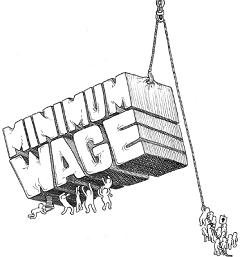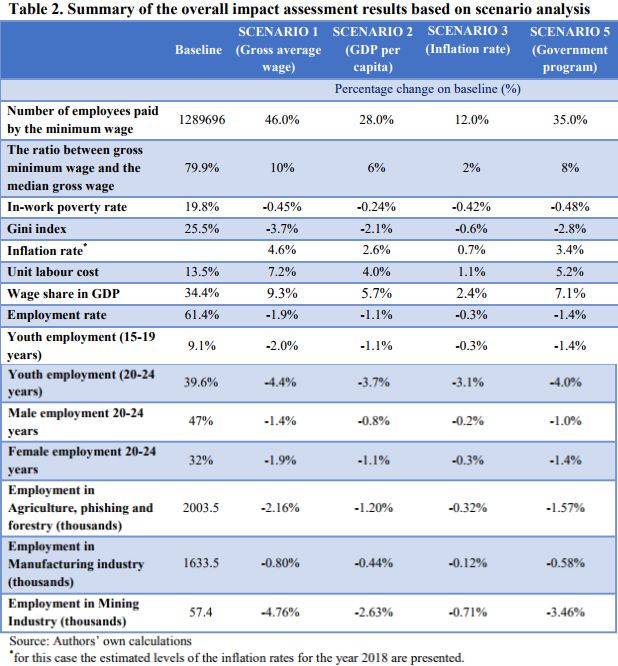 The cascading increase of the national minimum wage in Romania has caused a bizarre phenomenon – which the specialty textbooks seem to have foreseen only in the extreme scenarios.
The cascading increase of the national minimum wage in Romania has caused a bizarre phenomenon – which the specialty textbooks seem to have foreseen only in the extreme scenarios.
It is the reaction of the economy to the forced increase in the national minimum wage: employers, forced to raise the minimum wages, cannot keep up with the corresponding increase in salaries of other employees.
It has come to the fact that an increasing number of employees are getting close to the median salary: that is, even though we have the lowest nominal salaries, we have the highest low salaries compared to the median salary:
The minimum wage has reached 80% of the median wage – as in the northern countries!
How we got here – a demonstration below, based on figures and developments:
***
Romania currently has 1.3 million employees paid with the national minimum wage, which represents over a quarter of all employees.
A unique situation, at least in Europe, which shows a serious imbalance in the salary structure in Romania.
The increases in recent years of the national minimum wage (by political decisions), which were not followed by similar increases in the other pay scales of companies, led to an asymmetric wage distribution, strongly concentrated in the low-wage area.
In specialised terms, these increases have been followed, unlike what is happening in a stable economy, by a modest „ripple effect” (ripple effect – increasing the incomes of qualified people to maintain the hierarchy within companies).
That happens when the increases outweigh the potential of the real economy.
Effects of sudden increases of national minimum wage
Such increases need to be carefully considered to avoid unwanted effects – there are many controversies in the relevant literature, as well as models of impact calculation.
1)
Overall, when the national minimum wage growth is at least 10%, unemployment also slightly rises – between 0.02 and 2% -, especially for young and unskilled people.
2)
Besides, distortions in the wage structure may discourage qualified people, who find themselves in the situation of being paid far too little above the minimum level, which might encourage a new large outflow of employees to other countries and hence deepen the shortage of qualified staff.
3)
On the other hand, according to a research by the National Scientific Research Institute of Labour and Social Protection (INCSMPS), the frequent and significant increases in the national minimum wage can also demotivate the low-skilled people, who will no longer make any effort to earn more and they will only expect the promised increases.
4)
There is also a good aspect, experts say, because the difference between these minimum wages and the level of social aid could motivate the discouraged unemployed (those who are not looking for a job) to try accessing the labour market.
Why national minimum wage increases to 2,000 lei, instead of 1,550 lei, as in initial version
According to the first PSD-ALDE government program, the gross national minimum wage was to be 1,550 lei next year.
It was also accompanied by the transfer of all social contributions to the employee’s responsibility.
After the protests of the trade unions, PSD decided to raise this national minimum wage to 2,000 lei, to cover the decrease of the net amount following the payment of these additional contributions.
We do not know yet how much a gross minimum wage would mean, as other measures will also apply as of the next year, including the global income tax (IVG), which we do not know exactly how will look.
Sudden and frequent increases in national minimum wage also increase the number of employees paid with national minimum wage
The exact weight that the minimum wages will have next year can only be approximated because we do not know what will be the so-called ripple effect, we do not know how many of the current salaries of around 2,000 lei will increase.
But we can estimate that it will get close to 50%. The phenomenon is that employers, pressed to raise the minimum wage, can no longer also „align” higher wages by applying a proportional growth. (As it happens, for example, in the case of the employees in the public sector).
We have though an estimate based on the old salary scenario – if the minimum wage had advanced to 1,550 lei, the share of those paid at the level of the minimum remuneration would have extended by 35%, according to a research by the National Scientific Research Institute of Labour and Social Protection (INCSMPS), for the European Commission. This is a share that pushes us even further from the other European countries in the ranking of the EU countries with the highest share of employees paid with a minimum wage.
The latest Eurostat data for 2014 showed that Romania was the second largest European country after Slovenia, with the highest share of low-wage earners – about 14% of all employees:
 Share of employees paid the minimum wage (less than 105% of the minimum wage, according to Eurostat)
Share of employees paid the minimum wage (less than 105% of the minimum wage, according to Eurostat)
For reasons of comparability, Eurostat limited calculations to full-time employees who are at least 21 years of age and work in enterprises with at least ten employees, not including those from the public administration, defence and social security fields.
In the INCSMPS research, scenario 5 corresponds to the initial intentions announced by the government officials and the National Prognosis Commission data on the evolution of the national average wage (which is to increase from 3,131 lei in 2017 to 3,977 lei in 2020):
 The effects that the increase of the national minimum wage to 1,550 would have in 2018 are those in scenario 5 from the table below:
The effects that the increase of the national minimum wage to 1,550 would have in 2018 are those in scenario 5 from the table below:
 Employment is expected to decline by 1.4% next year, with a larger impact in the 20-24 years age category (where a 4% decrease will be registered, according to the research).
Employment is expected to decline by 1.4% next year, with a larger impact in the 20-24 years age category (where a 4% decrease will be registered, according to the research).
Romanian paradox: median salary decreases, the number of people with „large” salaries „increases”. We have even surpassed northern states
In 2014, Romania was the second European country, after Latvia, with the largest share of low-wage earners – 24.4% of all workers.
According to Eurostat, „low wages” means that remuneration is less than two-thirds of the median hourly wage (gross values).
The median wage represents the threshold above and under which half of the employees are placed.
 Share of people with low wage (hourly wage of less than two-thirds of median hourly wage)
Share of people with low wage (hourly wage of less than two-thirds of median hourly wage)
Source: Eurostat
Since 2014, three years have passed and four increases in the national minimum wage:
- On 1 January 2015, the increase was from 900 to 975 lei
- As of 1 July 2015, it went up to 1,050 lei
- On 1 May 2016, it reached 1,250 lei
- On 1 February 2017, it increased to 1,700 lei
Now, the national median salary is, according to the survey, 1,794 lei, and the national minimum wage represents about 80% of it.
Which means that, in theory, there are no more low salaries in Romania and we have surpassed even the northern social systems, which record the lowest percentages at this matter.
In reality, by absolute terms, both the minimum and the median wages are very low and rank second to last in the EU.
The median earning in Romania was 2 euros per hour in 2014, with only Bulgaria having less – 1.7 euros. Next were Lithuania (3.1 euro) and Latvia (3.4 euro).









